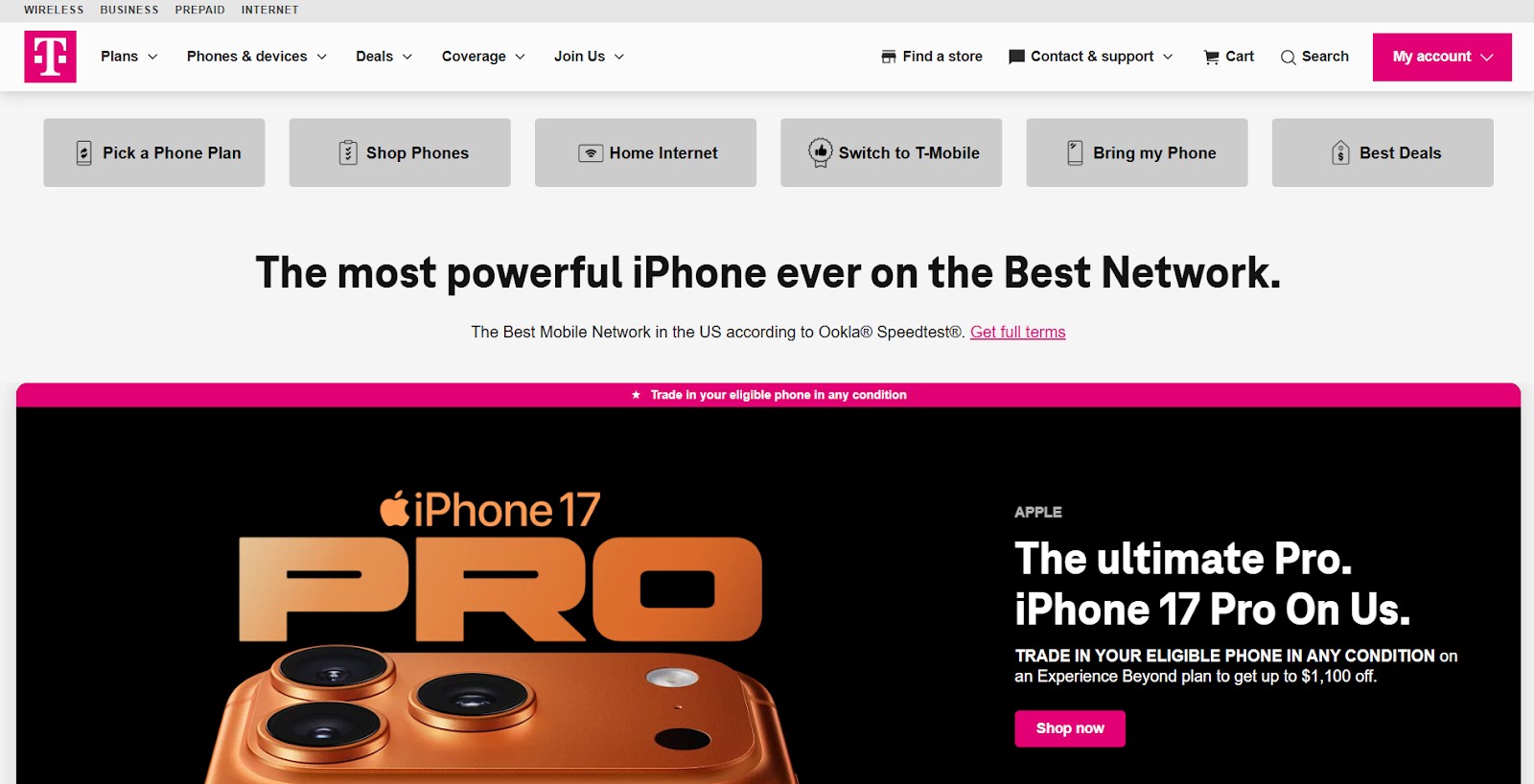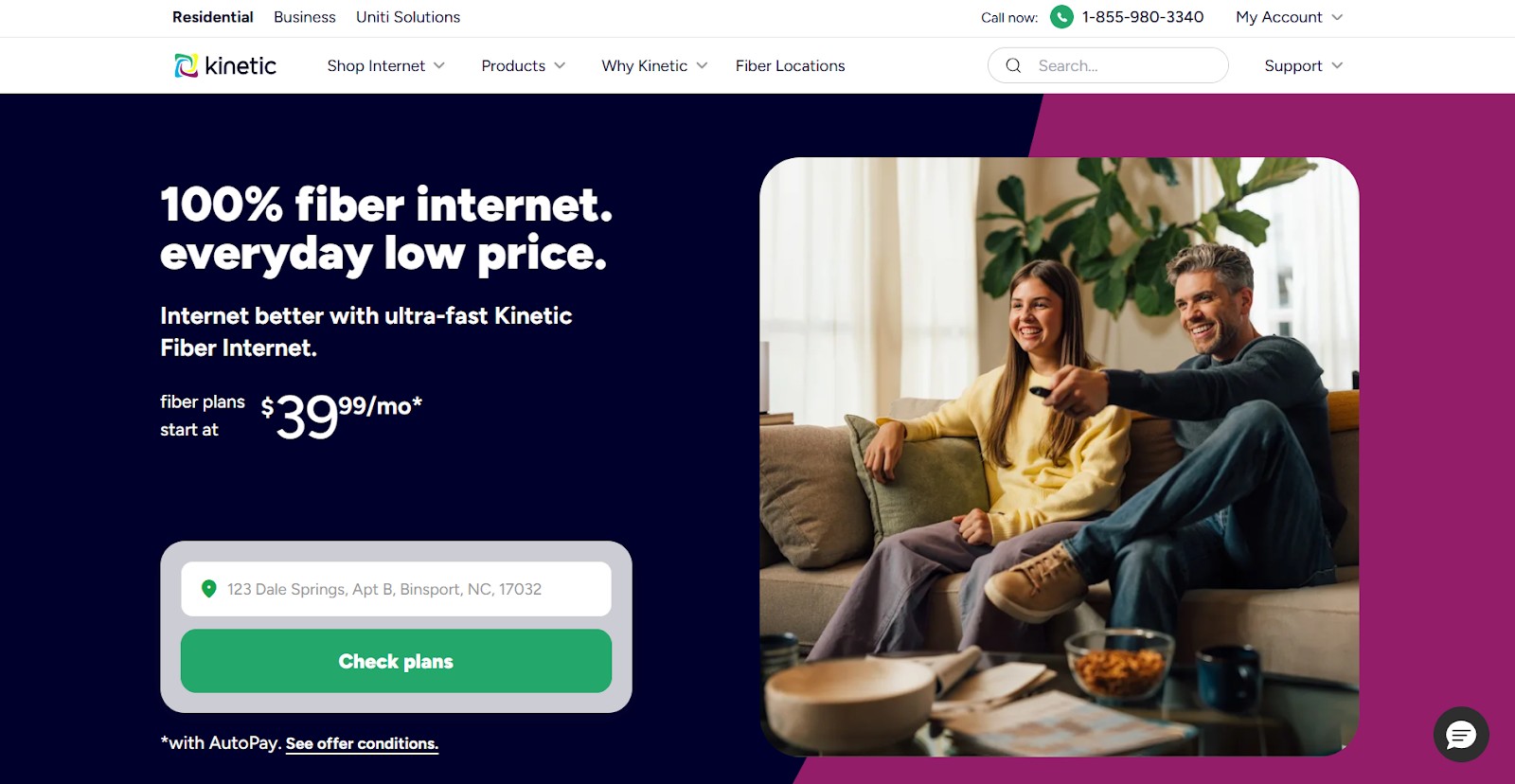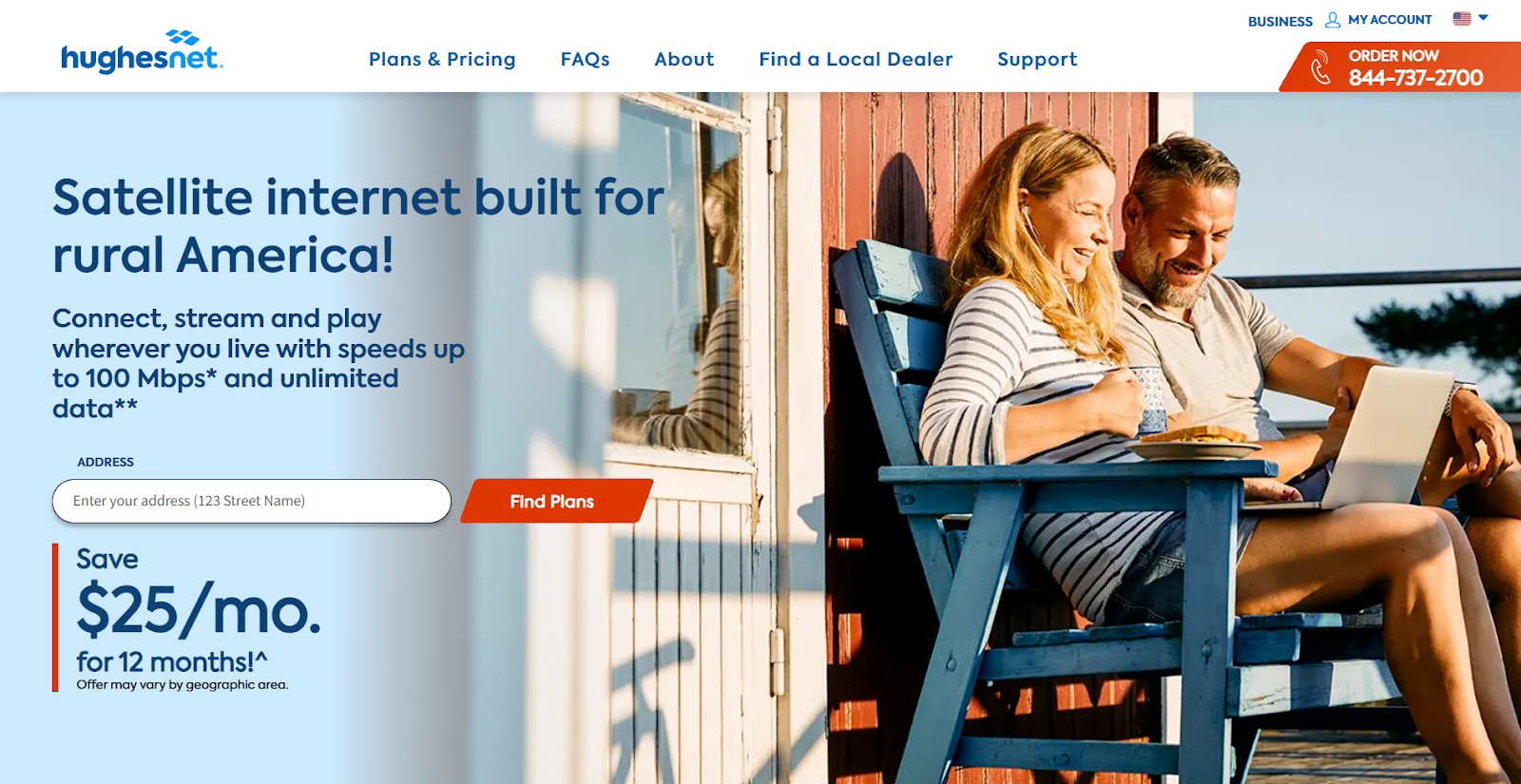Residents of small towns and those living in remote areas must have access to high-speed broadband. Quality service improves work and learning opportunities for people of all ages. It also enhances convenience through personal usage. Discover where you can find the best high-speed internet providers for small towns.
Connectivity Options for Rural Areas
As of August 2025, 52% of U.S. employees work remotely, while 26% telecommute full-time. This makes reliable, high-speed internet accessibility all the more critical for those living in rural areas. Small-town residents have different options they can consider, including the following:
- Satellite internet: Uses a satellite dish to connect your home network to a satellite
- 5G and 4G: Connects to a mobile hot spot or modem to deliver internet to your home
- DSL: Provides internet access through existing telephone lines
- Fixed wireless: A signal is broadcast from a central tower to your home antenna
- Fiber-optic: Utilizes fiber-optic cables underground to deliver fast-speed internet
The type of internet you require greatly depends on the availability in your area and your speed requirements. A provider can help you determine the right plan based on data caps and intended usage, including remote work, video conferencing and streaming.
Satellite is available nearly everywhere, making it ideal for small towns. It may be more expensive, though, and demonstrate latency issues. Meanwhile, you must have a nearby cell tower to access 4G and 5G broadband.
DSL may be more suitable for those on a budget, but its speeds are usually slower than those of other possibilities. Access to fixed wireless and fiber-optic is typically limited in remote locations. If it is available, it will provide the fastest and most reliable connection.
5 High-Speed Internet Providers for Small-TownResidents
Residents of rural areas need just as much internet access as someone living in a bustling city. So, where can you find the best high-speed internet providers for small towns?
1. Point Broadband

Point Broadband delivers internet, Wi-Fi, television and phone services to customers across 10 markets, including Texas, Florida and New York. They are an ideal choice for small-town households and businesses seeking fiber-based solutions and best-in-class customer service.
Fiber internet ensures rapid, symmetrical two-way speed for uploads and downloads, reliable data transmission with limited disruption, optimal security and versatility across numerous devices. The provider’s fiber-to-the-premises network offers a data transfer rate of up to 2 gigabits per second, and its fixed wireless technology service provides a fiber-based wireless signal capable of reaching 200 megabits per second (Mbps).
Point Broadband ensures that new customers receive a three-year price guarantee and offers a refund within 30 days if they are not satisfied with the service.
Key Features
- Fiber internet options across 10 states
- Three-year locked-in price rate for new customers
- 30-day money-back guarantee
2. T-Mobile

T-Mobile is actively expanding its 5G network coverage to small towns across the nation. 5G networks transfer vast amounts of data more efficiently than 4G, resulting in rapid internet speeds, less latency and the ability to handle multiple devices without disruption. Currently, this provider’s 5G coverage reaches 98% of Americans.
Save money annually when you bundle T-Mobile services, including AutoPay and four lines on Experience Beyond and All-In 5G Home Internet plans. It also gives you a five-year price guarantee.
If you are unsure if T-Mobile is right for you, consider trying it for free for 30 days. You do not need to provide your credit card information to complete this process.
Key Features
- 5G network coverage for 98% of Americans
- Bundled savings with a five-year price guarantee
- 30-day free trial
3. Kinetic

Kinetic — formerly Windstream — is available in 18 states, with most coverage spanning the Midwest and East Coast. It delivers internet, home security, Wi-Fi protection and Voice over Internet Protocol to its customers, utilizing hybrid fiber-DSL connections and fiber-optic internet access.
High-speed networks range from 200 Mbps to Fiber gigabit speeds of 1,000 Mbps. Select a plan that suits your budget and usage requirements. Take advantage of free installation and save monthly when you bundle.
You can easily determine which Kinetic internet plans are available in your area by searching for your address on its website.
Key Features
- Provides DSL, fiber-optic and dial-up internet options
- Speeds ranging from 200 Mbps to 1,000 Mbps
- Bundled savings
4. CenturyLink
CenturyLink is one of the best high-speed internet providers for small towns, delivering DSL, satellite and fixed wireless options. You do not have to worry about annual contracts or promotional rates with expiration dates that occur within a few months. It also will not surprise you with bundles or data overage charges.
Rural plans are affordable for those on a budget. Although it offers fast speeds, upload and download rates vary by location and the type of internet that is available. Currently, CenturyLink provides coverage in 16 states, including Arizona, Colorado, Montana and Oregon.
Key Features
- DSL, satellite and fixed wireless internet
- No annual contracts or data overage charges
- Connect several devices and users
5. Hughesnet

Hughesnet is an excellent choice for high-speed satellite internet in rural areas, offering speeds of up to 100 Mbps and unlimited data plans. All plans come with built-in Wi-Fi, which you can enhance by adding mesh nodes to eliminate dead zones and improve reliability.
Customers will receive a two-year price lock guarantee, ensuring their fees stay the same. It also offers free installation, assisted by an experienced professional. Search for a plan in your area and schedule your equipment setup within a few days of placing your order. The technician will determine the best place to situate the satellite dish for optimal signal quality.
Key Features
- High-speed satellite internet with built-in Wi-Fi
- Speeds reaching 100 Mbps
- Free equipment installation
Choosing the Best High-Speed Internet Providers for Small Towns
Selecting the right high-speed internet provider for small towns requires careful consideration of broadband availability, as well as the plans and pricing available to you. Each provider offers a wide range of products and services to meet your connectivity needs. When choosing a vendor, consider the following criteria:
|
Availability |
Use address search tools on the provider’s website to determine if they offer internet in your small town. You should also speak with neighbors to learn who they get their internet from and whether they would recommend their services. |
|
Internet Connection Types |
Find out if they offer DSL, 4G and 5G, satellite, fixed wireless or fiber-optic internet types. |
|
Speed and Reliability |
Evaluate the upload and download speeds that each provider’s internet options reach, along with their latency rate. |
|
Costs and Contracts |
Ask for the starting costs of rural internet plans, including the number of devices allowed. Also, see if they will give you a locked-in price guarantee, money-back guarantee, free trial and no-contract terms. |
|
Customer Service and Reputation |
Research the provider’s reputation for excellence. Do they offer exemplary customer support, as well as free installation and technical assistance? Read online reviews and testimonials for further insight into customer satisfaction. |
How Much Internet Speed Do You Need?
The amount of internet you need depends on your household’s usage habits. As you analyze various providers and their offerings, make a list of the essential functions. For example, do you work from home and use video conferencing? Maybe you enjoy gaming or streaming shows. These uses will require a greater internet connection than basic browsing and checking emails.
You must also consider the number of devices and users you have. The more connections, the higher the Mbps is required to avoid buffering and lag time. A plan should provide enough speed and reliability to accommodate large data transmissions.
Are You Eligible for Government Assistance to Pay for Internet?
The Universal Service Administrative Company manages the Lifeline Support program, a federal initiative that helps low-income households afford phone and internet services. If you qualify, you can save up to $9.25 per month.
Eligibility criteria include participation in various government programs — such as Medicaid and the Supplemental Nutrition Assistance Program — or a household income 135% below the federal poverty line.
You might also qualify if you are a survivor of domestic violence or human trafficking. The Lifeline program will ask you to provide evidence of a line of separation and financial hardship in accordance with the Safe Connections Act. The program will then give you up to six months of emergency connectivity support.
Will Small-Town Internet Coverage Improve?
Many internet providers are expanding access to high-speed internet across America. The latest technologies, such as 5G and low-Earth orbit satellites, are making this possible in underserved communities.
During the COVID-19 pandemic, the U.S. government provided $87 billion in funding to increase the adoption and accessibility of broadband. The expansion increases economic development and earning potential for rural areas and reduces social inequities. It also boosts learning opportunities for children in communities with limited resources.
Attaining High-Speed Connectivity in a Small Town
High-speed internet access is critical, whether you live in a big city or a small town. For those in more rural settings, having several options is ideal for achieving greater connectivity for work and personal use.

